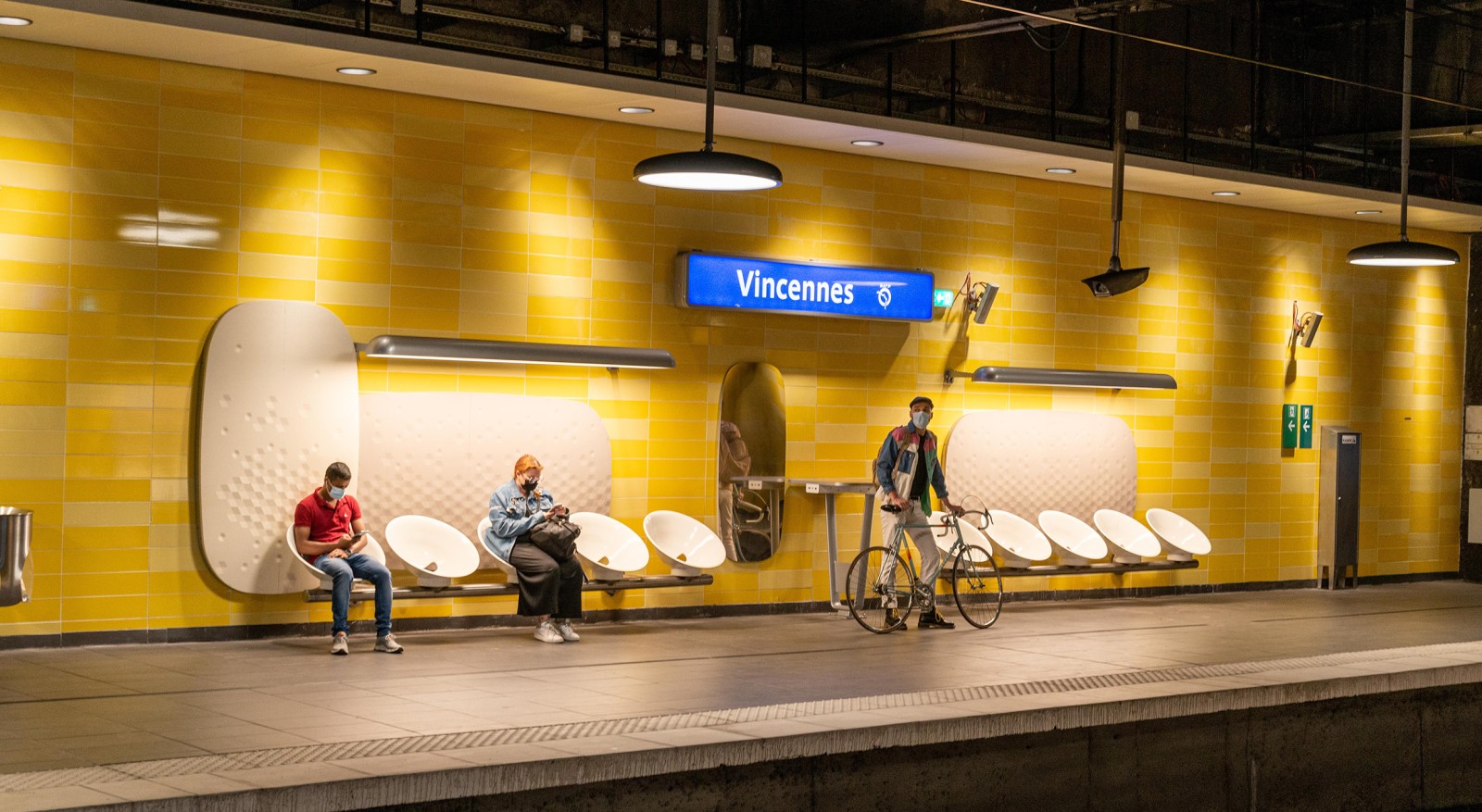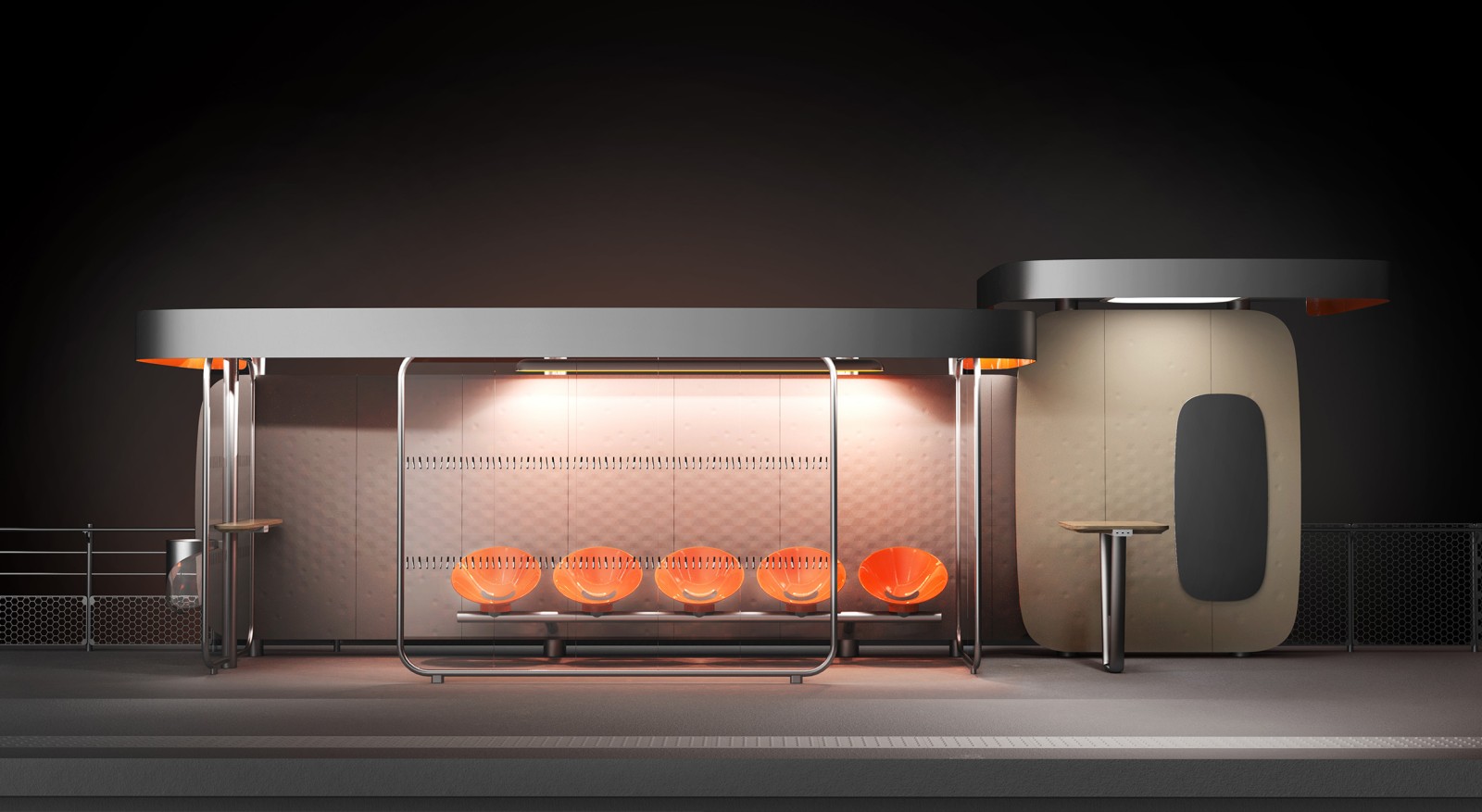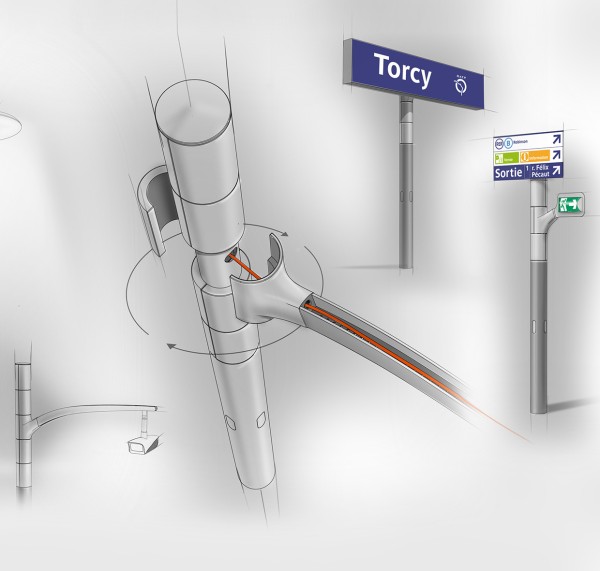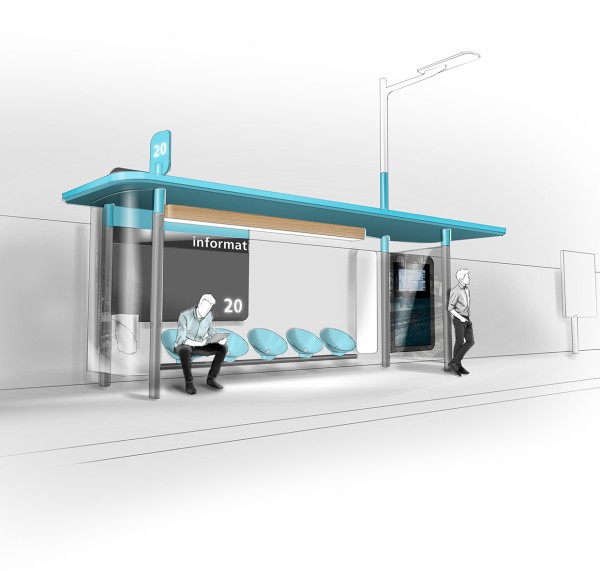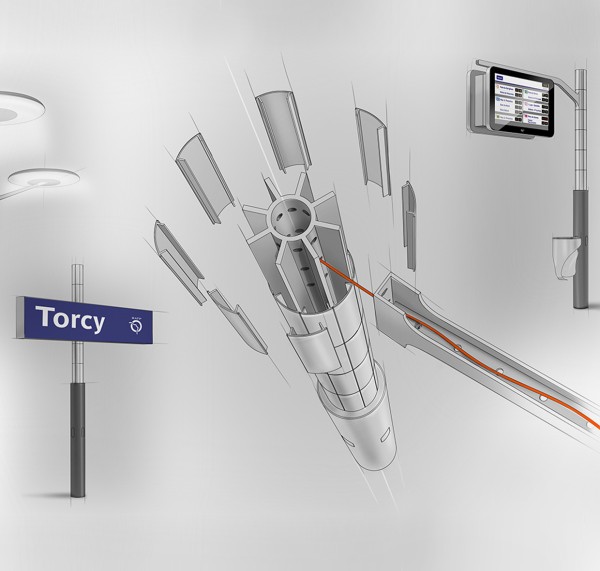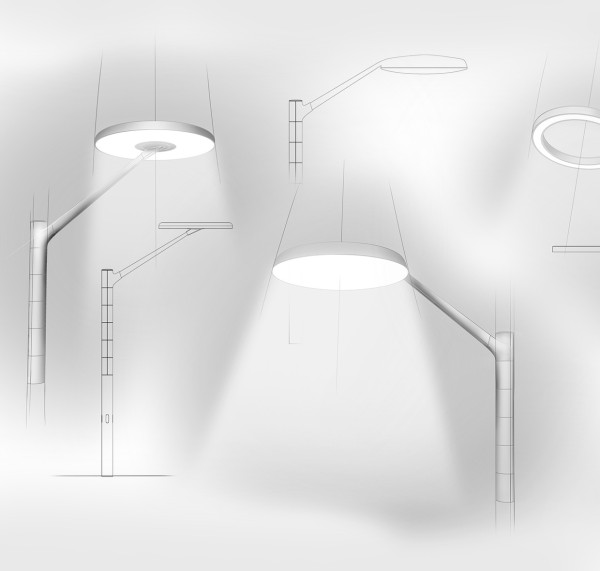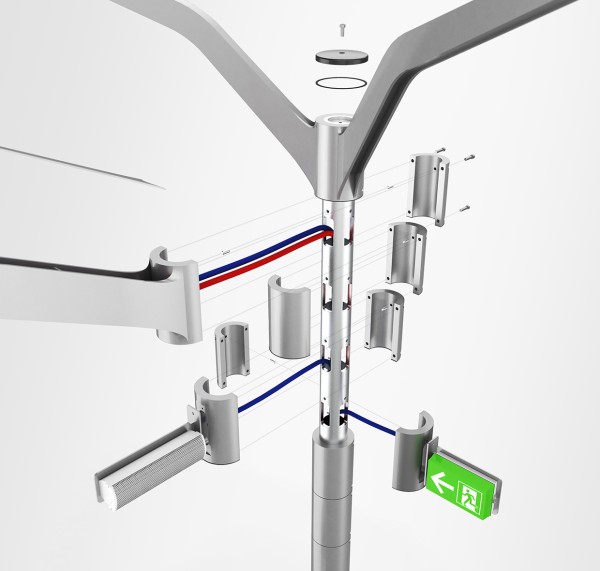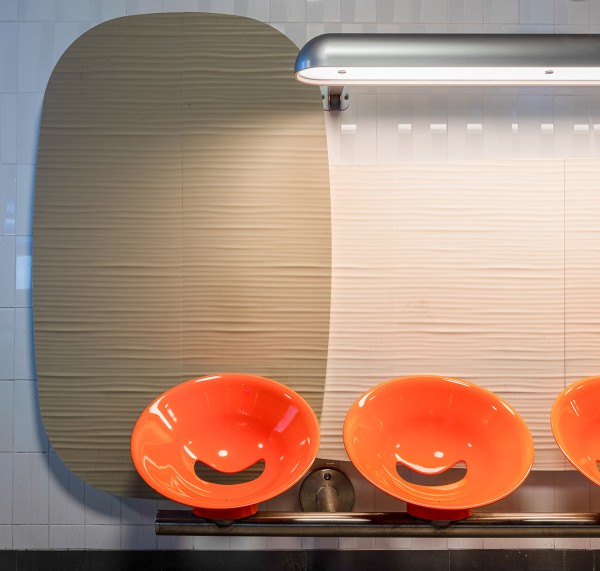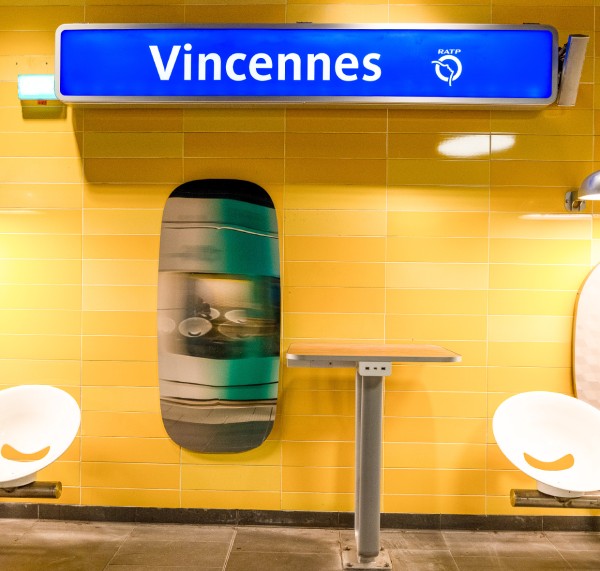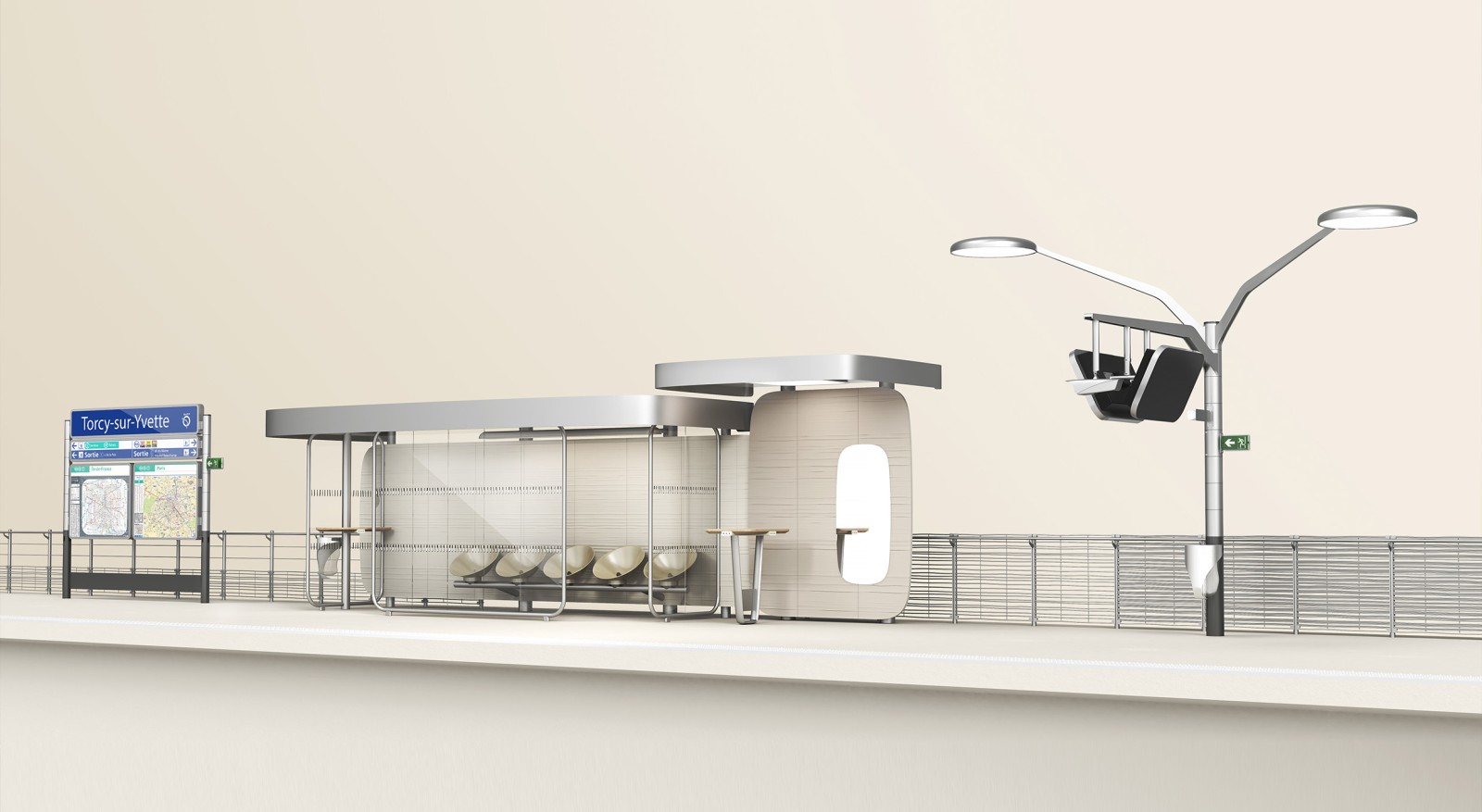
RATP
In October 2014, RATP launched a European call for tender for the renewal of the RER, our studio won the competition and started the study in February 2015.
RATP's brief was to create a family of components that would become the future deployment standards for the renovation of small and medium-sized RER stations, and that could be deployed on the central Parisian section.
The ambition was to create a new identity for RER stations whose design dates from the 1970s. By renewing all the platform equipment, the aim was to create a new signature for RER stations.
RATP also wanted to express its particular attention to passengers, resulting in a positive and rewarding experience.
The scope of the study covered passenger waiting areas, passenger information, platform lighting and railings. These multiple components are available in underground, overhead and canopy versions.
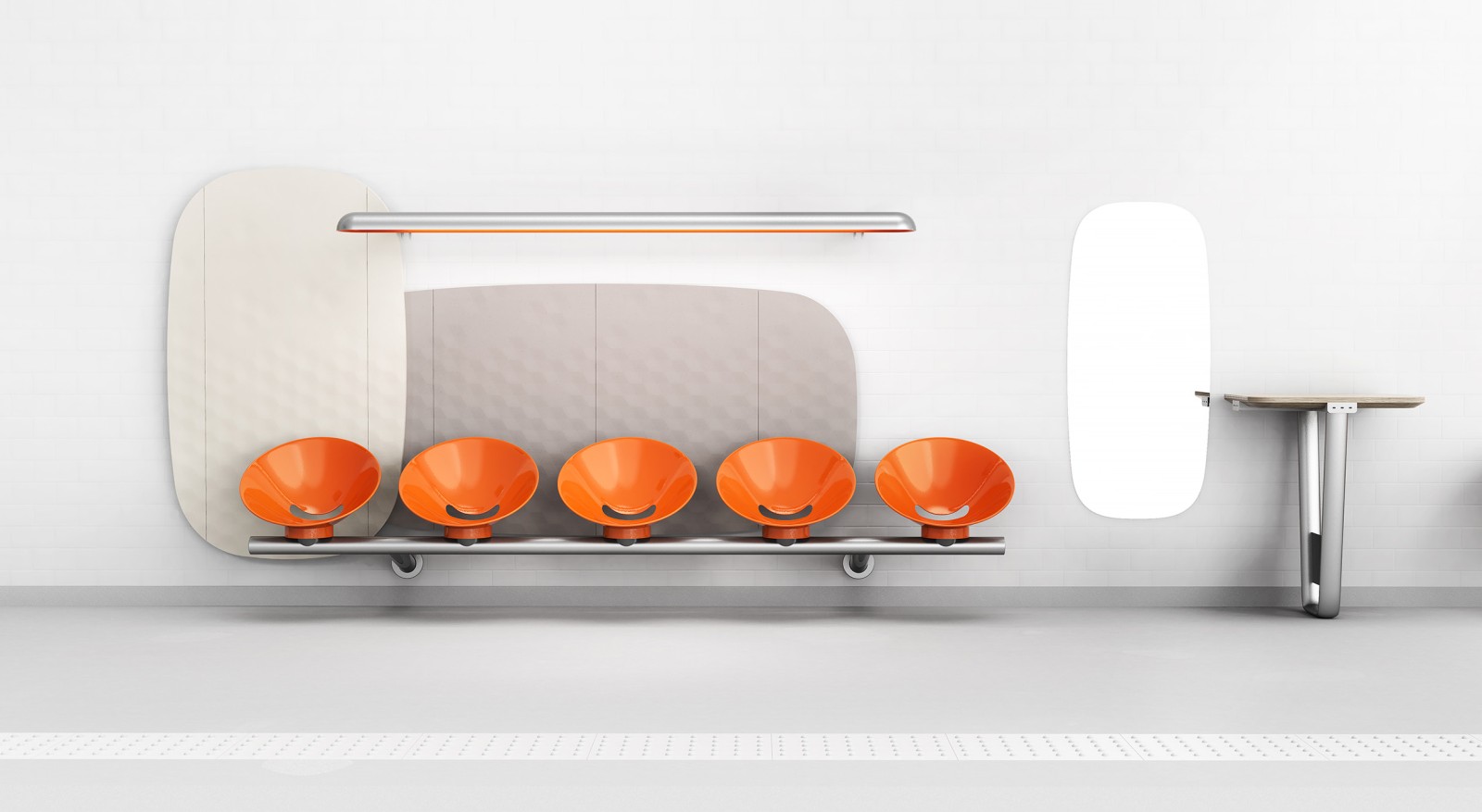
How did the RATP choose Studio Fritsch-Durisotti to take charge of this project?
Like any public institution, RATP launched a call for tender based on a competition. After selecting five design agencies, they were put into competition on the subject of the RER Renewal.
The RATP chose our studio for two main reasons: the fact that our response integrates the notion of a journey and a renewed experience each time, in particular through the diversity of the proposed atmospheres. Our choice was based on the warm character of the waiting areas and the attention paid to materials, shapes, colours and lighting, suggesting four atmospheres inspired by the world of the home, such as a living room or library...
The second reason is that we imagined a multi-functional mast system which, like a tree, develops as many branches as necessary to support bins, cameras, loudspeakers, passenger displays, maps, safety devices, platform lighting, etc. This principle of branches is evolutionary and also anticipates future platform equipment not yet defined.
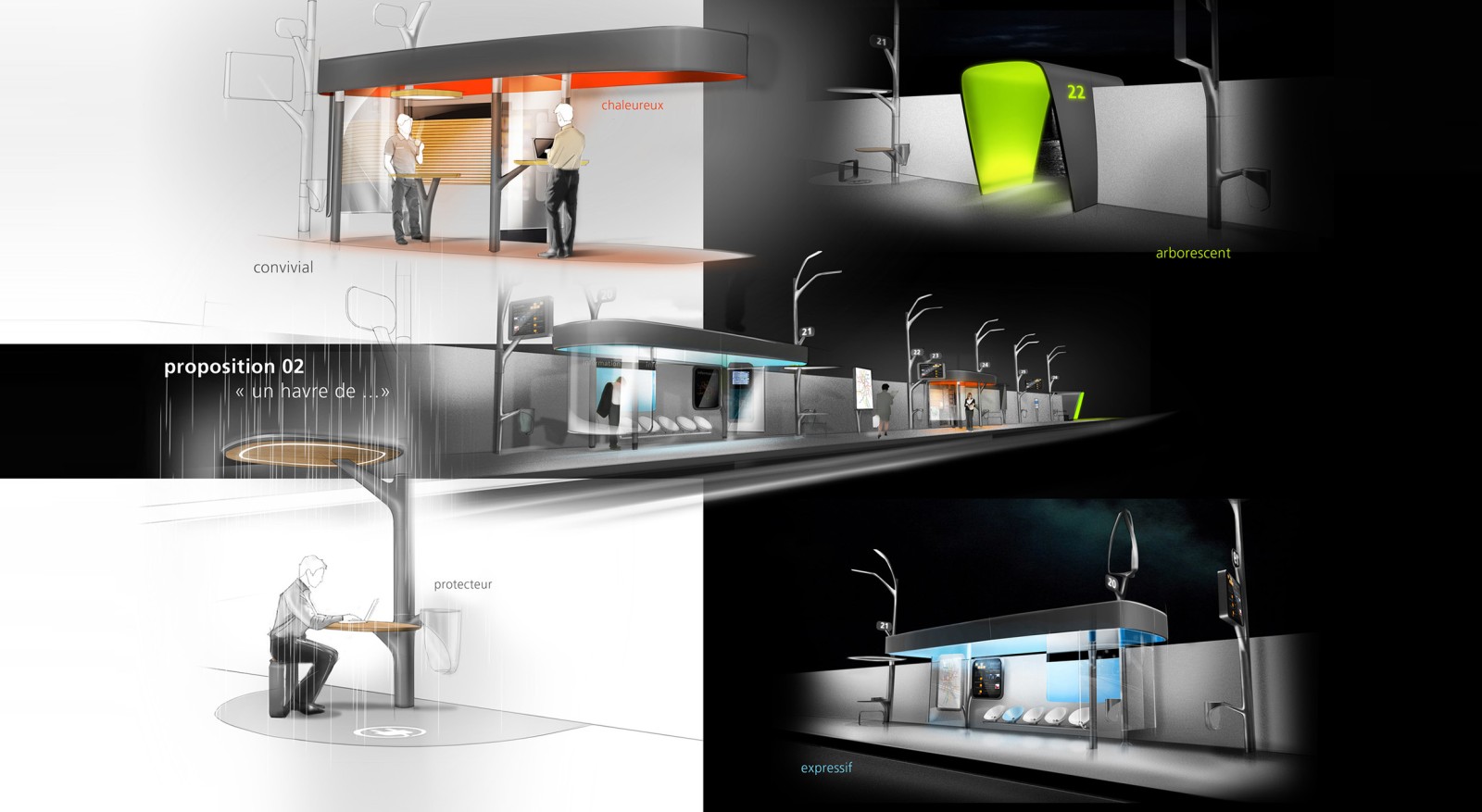
Your links + Your expertise + Was there any competition between agencies?
The F&D studio has been working for the RATP for many years on subjects such as metro access locking systems, platform cabinets, corridor lighting, station name light boxes, etc. It was therefore natural for the RATP to ask us to take part in this particularly ambitious competition.
It was therefore natural that the RATP asked us to take part in this particularly ambitious competition.
Our expertise in global design is widely used in such a project where usage, image issues, quality, durability, sustainable development criteria, design to cost and industrial feasibility must be integrated into the proposed solutions.
We know the RATP well, but each competition is a new challenge where competition between agencies is high, this one being distinguished in particular by the importance of the project and the associated image stakes.
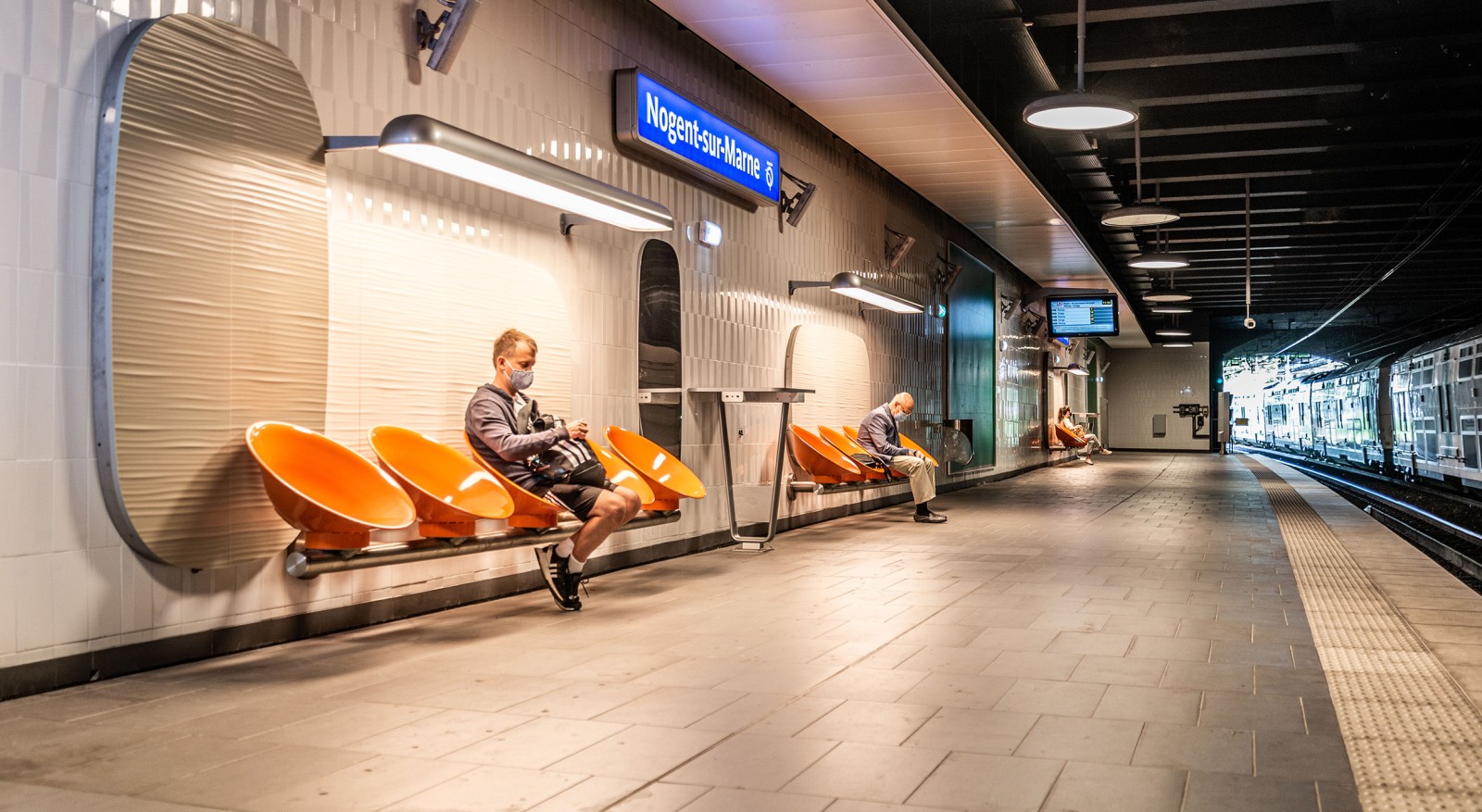
Details of the furniture designed / Adaptation to the space involved (give the example of a specific station).
What are the specific constraints for the development of this type of space?
There are many constraints, the first of which is that the products must be durable for at least 30 years in an environment that is often hostile (especially overhead) and subject to all kinds of deliberate damage: tags, scratches, fire, acid attacks, etc.
The notion of maintaining equipment throughout its life cycle is a constraint that had to be anticipated. It justified close collaboration with the RATP teams and in particular with the "maintainers", who are also the users of our products, so that their interventions are facilitated in the long term.
High standards of resistance, cleanability, maintainability and safety to guarantee their durability...
What is the scope of the mission and what are the next major steps and deliveries of new stations? And when will they be delivered?
The programme is in the deployment phase and currently concerns the following stations on line A: Vincennes (underground), Nanterre ville (outside) and Nogent sur Marne. These three stations will be followed by around ten stations on line B and eventually all 65 stations operated by RATP.
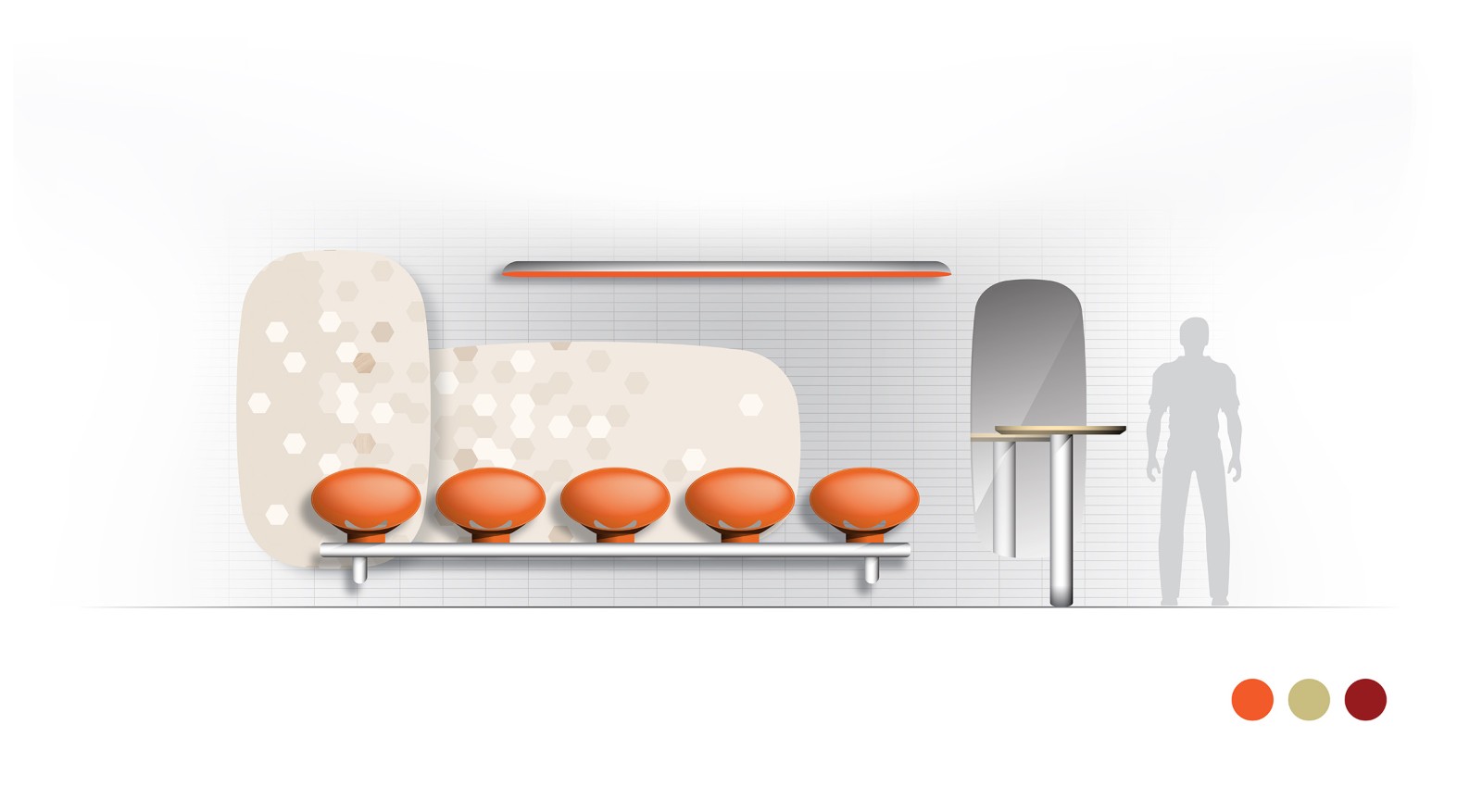
Opening to the next new stations.
How many people were mobilised at the F-D studio? And for how long?
Dedicated resources were mobilised internally throughout the first phase of the project, i.e. around three people over a year and a half. Then two people over the following two years, and finally a long-term industrial follow-up until today.
Did this mission allow you to receive other calls for tender from the RATP?
Following a new call for tenders, we are currently working on the platform lighting for line 4 of the metro, where the entire line has been equipped with automatic landing doors. This project represents 4,000 linear metres of lighting and cable runs.
In addition to the functional, technical and economic criteria that determined the choice of solutions, this project is remarkable for the constant attention paid to the well-being of passengers.
This was the wish expressed from the outset by the client, RATP, and we made this essential criterion the compass of our creative approach. The user is at the heart of the RER Renewal, and a renewed experience is the key to his satisfaction.
